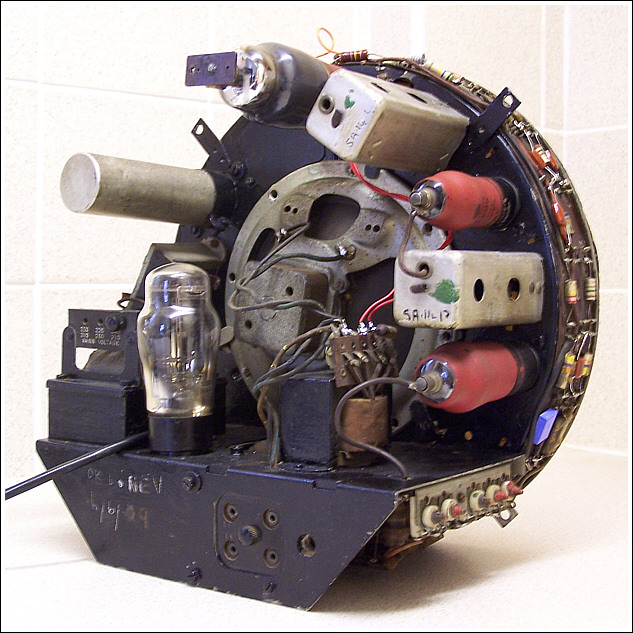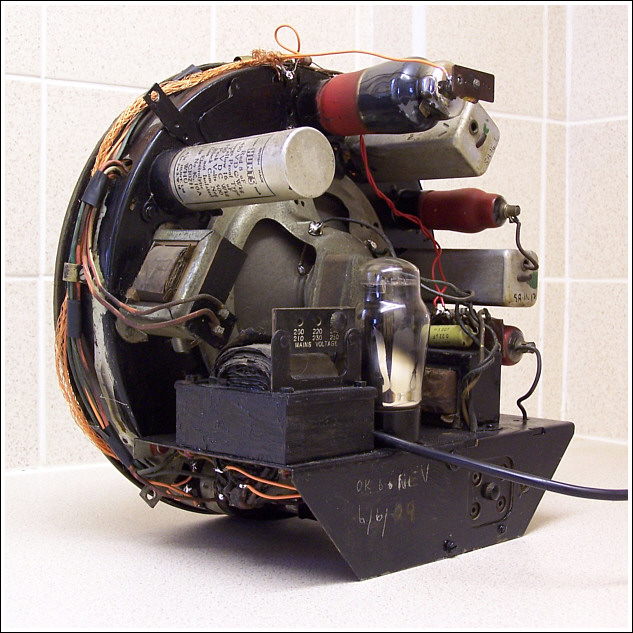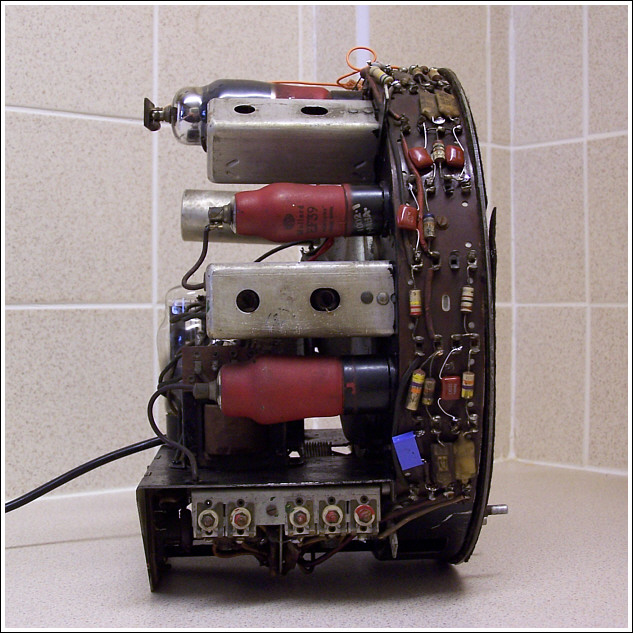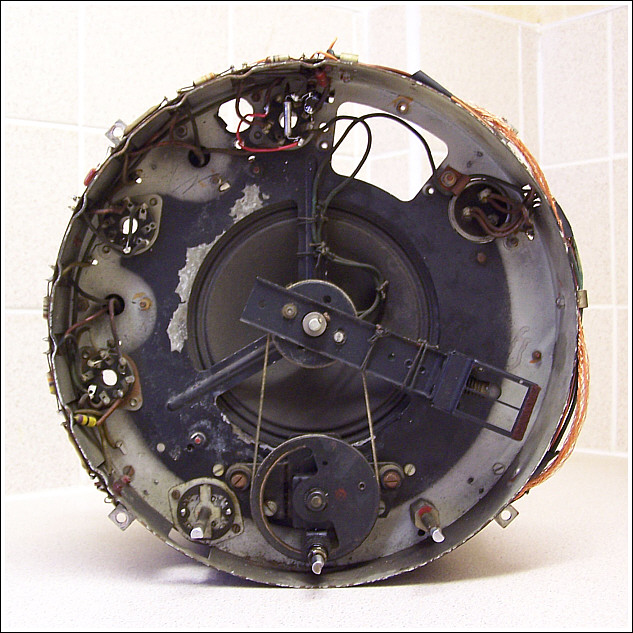
1. Introduction
A few years ago now, I was fortunate enough to find locally an empty walnut brown Ekco A22 bakelite case. It was in excellent condition and I immediately bought it.
My intention was then to look out for an A22 chassis or a complete set with a damaged case that I could pick up at a hopefully much reduced price and combine.
For several months that looked very unlikely to happen and I did serious work instead using parts from scrap Ekco A23 and A28 sets to construct a reproduction chassis to fit my empty case - then unexpectedly the real thing turned up!
When I collected the set the seller told me that when he had purchased it himself it had been damaged in transit and he had repaired the resulting broken case with Araldite - he had also "comprehensively overhauled" the chassis and it was in "superb working order".
A quick look at the damage to the case showed it to be not as bad as I had first assumed and I thought I could much improve on the copious amounts of glue that had been used.
But since I had always intended to transfer the chassis to my unblemished case it was not a real issue for me. I also noticed the set had a rough board as a replacement back cover - the original obviously having gone missing at some point.
Upon getting the set home I plugged it in to try it out - after a bit of a warm-up the medium wave range brought in the local station loud and clear even without an aerial connected.
The addition of a few metres of wire as a temporary antenna and the medium waves were much more lively. The short wave range too was very good with stations all over the dial but ominously the long waves were just a steady hiss.
On removing the back I was greeted with an unexpected sight. The chassis was daubed with a black paint that was "treacle-like" in places - especially the mains transformer.


I removed the chassis for a closer inspection and was again shocked by what I saw - the state of the wiring was terrible. A few wires had obviously been renewed by modern red and orange, but most was original, hard, brittle and flaking showing exposed wire.
Further investigation showed the "overhaul" to have included replacement of all but one of the wax capacitors with apparently whatever type was to hand at the time.

Some of the resistors had been changed as well but most obvious was a bodged attempt to make a screening braid from what looked like the outer layer of a piece of co-axial cable.

If I'd have been aware the set was in this poor a condition before hand I would have never applied power - I was really surprised the set worked as well as it did in this state.